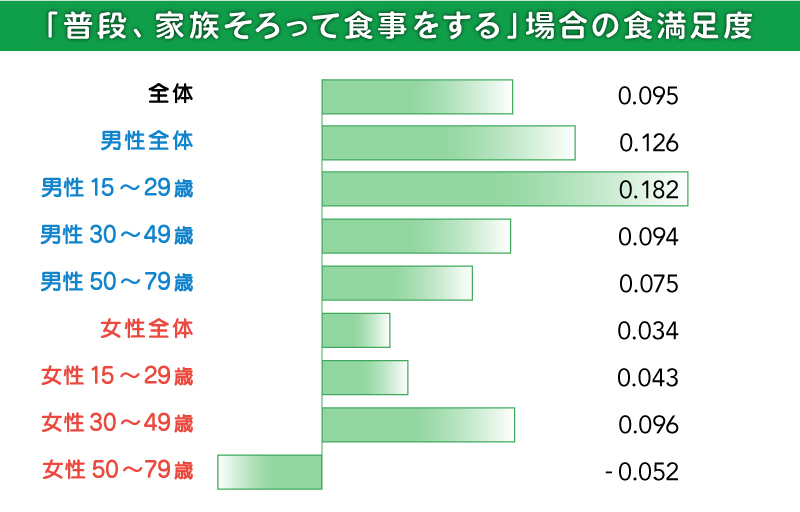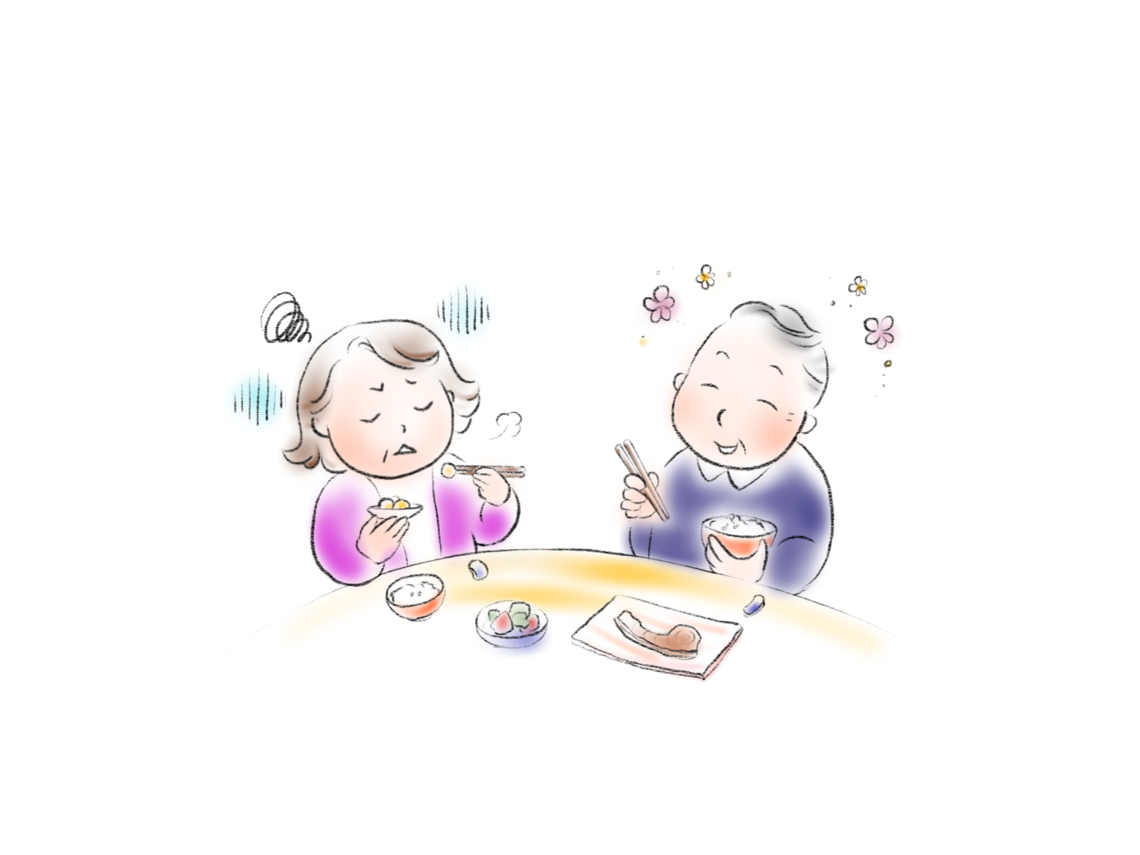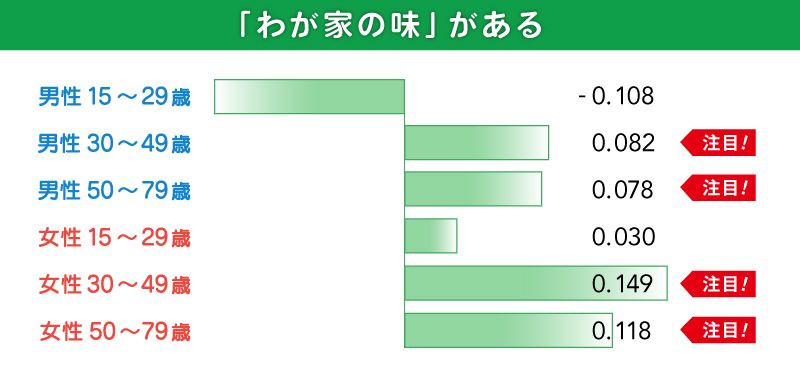
Graph 1-1

Figure 1-2
Graph 1 extracts items with a high impact on food satisfaction for both men and women and lists them in descending order.
The numerical values next to each item represent its impact on food satisfaction (*3). A larger absolute value indicates a stronger influence. Conversely, as seen in the subsequent graph, a negative value means that the item's content lowers food satisfaction.
Graph 1 indicates that men's food satisfaction is primarily driven by their own "health," "financial situation," and relationships with "family/partner." In contrast, women's food satisfaction is influenced not only by their own "health" but also by "confidence in cooking" and "meal communication"—the act of conveying feelings to the person who prepared the food.
While men's food satisfaction is skewed toward what they "eat" and their environment, women's food satisfaction is also influenced by their feelings and environment when "cooking."
Men with a strong consumer mindset, women with a strong producer mindset.
Regardless of whether this is good or bad, analyzing food satisfaction offers a glimpse into the current state of Japanese society.
One point I found particularly interesting was the item stating that women are "proactive in romance."
At first glance, "romance" and "food" seem like distant concepts, but if you interpret it as meaning that people who actively enjoy romance also enjoy meals with their loved ones, it somehow makes sense.
Perhaps it's not just the act of "eating" with someone important, but also the act of "cooking" for them that contributes to their food satisfaction.
Another noteworthy point is the item about women being "the type to tell the cook 'It's delicious!'" Expressing "It's delicious" is clearly an important part of shaping women's satisfaction with food.
Because they're the ones preparing meals daily, gratitude and affection for the cook naturally come out in words. That's precisely why, conversely, many people probably wish someone would say something nice to them too... At least, that's how I feel!
Hang in there, retiree uncles!

Graph 2
Graph 2 compares the impact of "usually eating meals together as a family" on food satisfaction across different age and gender groups.
The difference between women and men is quite clear.
Overall, men tend to experience higher food satisfaction from "eating meals with family" than women, with men in their teens and twenties standing out particularly.
This is an age where life stages change rapidly: after being absorbed in club activities or exam preparation, they enter a new student life, then leave home to start living alone... Perhaps they seek "eating meals with family" as a reaction to having fewer opportunities to eat together as a family, unlike before.
While "eating meals with family" generally has a positive impact on food satisfaction, surprisingly, only women aged 50 and above showed lower food satisfaction when eating with family.
Children become independent, and life centers around just the couple. For men, time spent at home increases dramatically after retirement. Women often feel stressed by these changes. Since women are usually the ones responsible for meal preparation, this might also be a source of stress.

Illustration: Mio Oshima/Dentsu Inc.
For women in their 50s and older, eating meals with family leads to lower food satisfaction.
A truly real and poignant discovery.
But don't worry! At Food Lab, we're brainstorming ideas to help change this situation, even just a little. We want to make it happen and boost food satisfaction levels in the world even higher. That's what we're thinking.
The taste of home
Finally, I'd like to end on a slightly comforting note.

Graph 3
Graph 3 shows the impact of the "has our family's unique flavor" item on food satisfaction.
While "having a family's signature taste" does not contribute to food satisfaction among those in their teens and twenties (for men) or has a low impact (for women), it is found to have a positive influence on food satisfaction overall for those in their thirties and older.
In other words, as people age, those who feel they have a foundational taste or a taste they can return to experience higher food satisfaction.
It's likely that establishing one's own household through marriage, childbirth, and child-rearing further heightens awareness of "our family's taste," influencing food satisfaction. This tendency appears stronger among women.
Personally, I intuitively understand this. When young, we crave something edgy or different, seeking enjoyment and joy "outside the home." Taste is no exception.
But as you age, you gradually come to appreciate the comforting goodness of flavors found "within the home." This feeling intensifies when you start your own family. While busy with daily cooking and creating flavors, you deeply feel the preciousness of the "home flavors" your own parents made for you long ago.
We used to call it "mother's cooking."
I'm a bit curious what it will be called in the years to come.
Next time, I'll focus on teenagers, who will shape the future of food, and explore "Food and the Future."
I look forward to continuing to explore "Food and [Topic]" together with all of you.
Notes
*1. Food Lifestyle Lab Survey vol.5: Internet survey, 1,200 people aged 15-79, September 2016, Video Research Ltd.
*2 Food Satisfaction = Scoring current dietary habits on a 10-point scale. The influence of related awareness and behavioral items on this score was measured via multiple regression analysis.
*3 An index of the magnitude of influence on the dependent variable (dietary satisfaction). For example, a score of 0.177 means that when the standard score of the explanatory variable increases by 1, the standard score of the dependent variable increases by 0.177.







